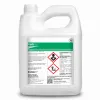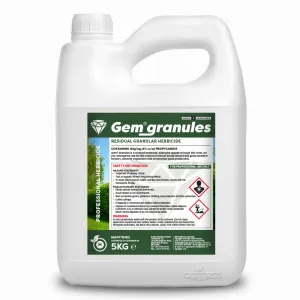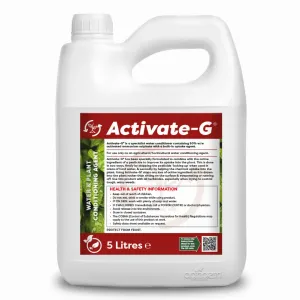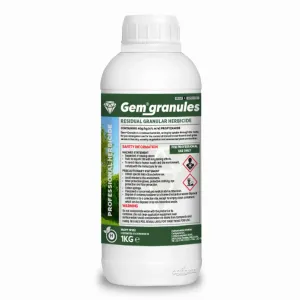




Kerb Flo Residual Weed Killer 5L
- Residual herbicide that can be used as either pre or post-emergence.
- Specifically designed to kill grasses, however it can also be effective on chickweed, cleavers, bindweed, fat hen and horsetail.
- Ideal for use on ornamental shrubs, roses and near trees and hedges.
 Gem Granules Residual Weed Killer 5kg
Gem Granules Residual Weed Killer 5kg
Full Description
Kerb® Flo is a residual herbicide that can be used as a pre or post-emergence weed killer in forestry and amenity plantings. It is predominantly used to kill grass weeds, but can also control troublesome weeds such as chickweed, cleavers, bindweed, fat hen, and will offer some control against horsetail.
Kerb® Flo can be used on ornamental shrubs, roses and is also widely used near trees and hedges. As it is mobile in the soil, it is important to apply it in cooler conditions (the soil temperature being cooler than 8 degrees) and when there is plenty of moisture. This best time for this is usually between November & January.
We have this product available as a spreadable granule which can be easier to apply. If this interests you take a look at Gem Granules.
If you want to increase the spectrum of weeds which Kerb Flo will control, mix 42ml Kerb Flo + 5ml Flexidor per 5L of water. This mix will now control mayweed, poppy, nettle, speedwell & buttercup.
It is important that you only apply one dose of Kerb Flo per year. For a full list of controllable weeds and the tolerant lists of Trees & Shrubs, please download the product label.
For a cheaper alternative, look at Propyz.
Find out more about residual and pre-emergent weedkillers, in our Guide to Weed Killer Types:
Our Recommendation
- Always read the product label before use.
- Use Kerb® Flo for spraying around new trees or along hedgerows.
- If you're treating shrub beds, consider mixing in Flexidor to make a replacement for Casaron G.
- Save time and money and mix with Blue Dye to ensure no areas are missed or overdosed.
- Do not make more than one application of Kerb® Flo within 9 months to the same area of land.
- Best results are obtained when growth of weeds (epecially blackgrass and volunteer cereals) is slow, but transpiration continues.
- Always wear protective clothing, such as Chemical Resistant Gloves, when handling Kerb Flo®.
Technical Specification
| Product | Kerb Flo Residual Weed Killer 5L |
|---|---|
| Brand | Kerb Flo |
| Period Of Use | Autumn, Winter |
| Pack Size | 5 Litre |
| Active Ingredient | 400g/L propyzamide |
| Application Method | Knapsack, Boom Sprayer |
| Knapsack Sprayer Rate | 80ml per 10L of Water |
| Area of Use | Trees, Ornamentals |
| MAPP No. | 13716 |
| Boom Sprayer Rate | 4.25L/Hectare or 1.7L/Acre for Amenity areas |
| Pack Size Coverage | 1.5 Hectares or 15,000m² |
| Safe For Use On | Around Shrubs, Around Trees |
| Treats (Pest / Weed / Disease) | Annual Weeds, Bindweed, Buttercup, Chickweed, Fat Hen, Horse Tail, Mare |
| MSDS | Download |
| Product Label | Download |








